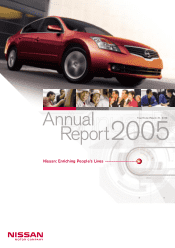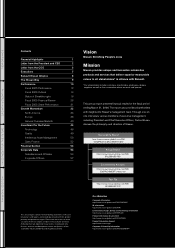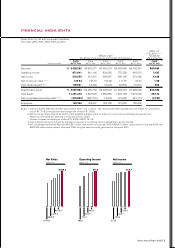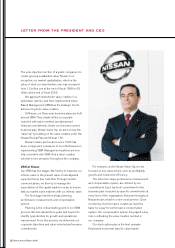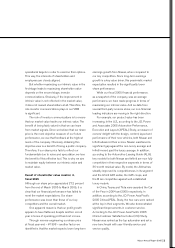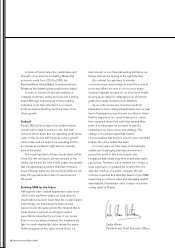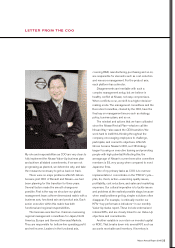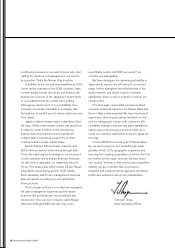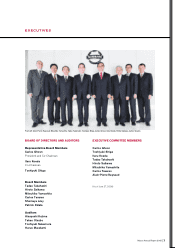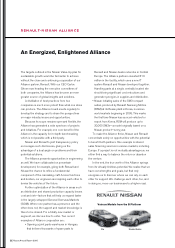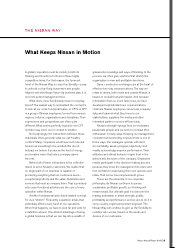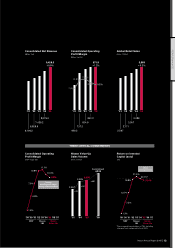Nissan 2006 Annual Report Download - page 7
Download and view the complete annual report
Please find page 7 of the 2006 Nissan annual report below. You can navigate through the pages in the report by either clicking on the pages listed below, or by using the keyword search tool below to find specific information within the annual report.
Nissan Annual Report 2005 5
LETTER FROM THE COO
My role and responsibilities as COO are very clear: to
fully implement the Nissan Value-Up business plan
and achieve all stated commitments. If we are not
progressing as planned, we determine why, and take
the measures necessary to get us back on track.
There were no major problems after Mr. Ghosn
became joint CEO of Renault and Nissan—we had
been planning for this transition for three years.
Several factors made the smooth changeover
possible. First is the way we structure our global
management team: a three-dimensional matrix with a
business axis, functional axis and product axis. Each
senior executive within this matrix has both
functional and regional responsibilities.
The business axis has four chairmen overseeing
regional management committees for Japan, North
America, Europe and General Overseas Markets.
They are responsible for bottom-line operating profit
and net income. Leaders in the functional axis,
covering R&D, manufacturing, purchasing and so on,
are responsible for elements such as cost reduction
and resource management. For the product axis,
each platform has a director.
Disagreements are inevitable with such a
complex management setup, but we believe in
healthy conflict at Nissan, not easy compromises.
When conflicts occur, we shift to a higher decision-
making mode. The management committees and the
Executive Committee, chaired by the CEO, have the
final say on management issues such as strategy,
policy, business plans, and so on.
The mindset and actions that we have cultivated
since the Nissan Revival Plan—what we call the
Nissan Way—also eased the CEO transition. We
work hard to instill this thinking throughout the
company, encouraging employees to challenge,
participate, and commit to objectives. After Mr.
Ghosn became Nissan’s CEO, our HR strategy
began focusing on executive training and promoting
people with high potential. Reflecting this, the
average age of Nissan’s current executive committee
members is 53, very young when compared to most
Japanese firms.
One of my primary tasks as COO is to oversee
implementation. I concentrate on the “PDCA” cycle—
plan, do, check, action—examining quality issues,
profitability, cost reductions, and sales and marketing
expenses. Our cultural imperative is to tackle issues
and problems at the earliest possible stage, because
when small problems get big, simpler solutions often
disappear. For example, I continually monitor our
KPIs—key performance indicators—in our monthly
Value-Up status report. These include external and
internal KPIs, and are closely linked to our Value-Up
objectives and commitments.
Another variable is our return on invested capital
or ROIC. That breaks down into several KPI, such as
accounts receivable and inventory. If inventory is

